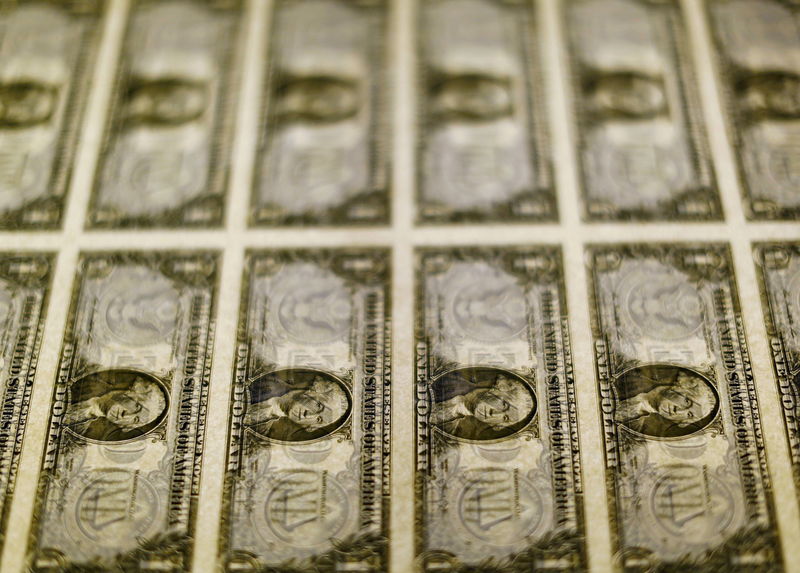By Rae Wee
SINGAPORE (Reuters) – The dollar was on the front foot on Wednesday, drawing support from yet another resilient U.S. economic data reading, while the euro struggled to make headway on the back of a darkening growth outlook in the bloc.
The Australian dollar rose more than 0.5% in an initial knee-jerk reaction following a higher-than-expected inflation print in Australia on Wednesday.
U.S. business output ticked higher in October as the manufacturing sector pulled out of a five-month contraction, data on Tuesday showed, while separate data released the same day showed the euro zone’s business activity in contrast took a surprise turn for the worse this month.
Against the dollar, the euro was last 0.05% higher at $1.0595, having declined 0.75% on Tuesday.
The single currency’s slide lifted the and it last steadied at 106.23, away from a one-month low of 105.35 hit in the previous session.
The euro is the most heavily weighted currency in the dollar index, which measures the greenback against a basket of six peers.
“The euro zone economy is kind of entering a recession, so this economic playout stiffens expectations that the European Central Bank might have (reached a) peak in interest rates,” said Tina Teng, market analyst at CMC Markets (LON:).
“By contrast, the U.S. Federal Reserve could continue to raise interest rates just because the economic data looks strong.”
The buoyant dollar kept the yen pinned near the closely watched 150 threshold, with the Japanese currency last at 149.86 per dollar, having mostly traded sideways over the past month and keeping traders on their toes for any signs of intervention by Japanese authorities.
Pressure is mounting on the Bank of Japan to change its bond yield control as global interest rates rise. A hike to an existing yield cap set just three months ago is being discussed as a possibility in the run up to next week’s policy meeting, sources said earlier this week.
Elsewhere, sterling rose 0.04% to $1.2165, while the New Zealand dollar gained 0.08% to $0.5849.
The Australian dollar was last 0.35% higher at $0.6378.
“The (Reserve Bank of Australia’s) November meeting is likely to be live, and the cash rate to be hiked to 4.35%. And I suspect it will be a hawkish hike,” said Matt Simpson, senior market analyst at City Index.
In cryptocurrencies, was last 0.28% lower at $33,822, holding near a roughly 18-month high hit on Tuesday.
The world’s largest cryptocurrency has been on a tear this week, having surged 10% on Monday, fuelled by mounting speculation that an exchange-traded bitcoin fund is imminent.
“A growing spot ETF market would invariably mean a growing market across most of the cryptocurrency landscape,” said John Glover, chief investment officer at crypto lender Ledn.
“If Bitcoin is being purchased for ETFs, the price will rise … there is a very real possibility that the launch of one or more spot ETFs could lead to the next major bull run in the entire cryptocurrency ecosystem.”
Read the full article here










